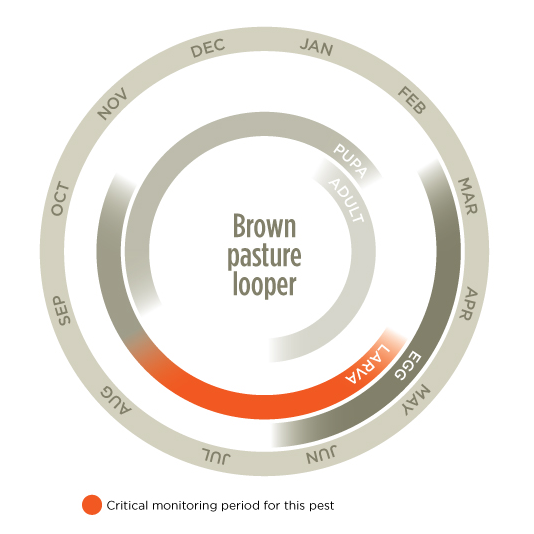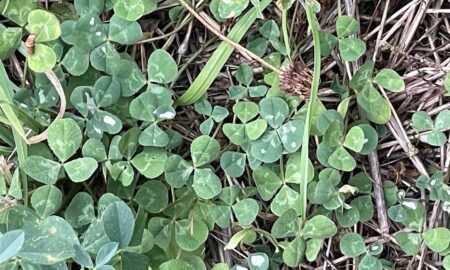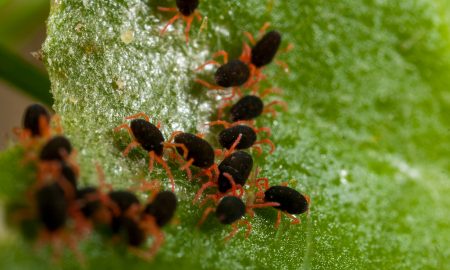Despite the name, the brown pasture looper (Ciampa arietaria) is more than just a pasture pest.
The larvae can feed on some broadacre crops sporadically, and if they are going to show up in your crops, you’ll likely start to see them around now.
In this article we discuss the brown pasture looper’s lifecycle, feeding symptoms, and seasonal management options for this native species.
This looper’s lifecycle
Brown pasture looper larvae start off very small and only develop the distinctive yellow wavy lines on their backs when they reach approximately 10 mm in length.
They have a predictable lifecycle, with only one generation per year.
The cold disrupts their flight, so moths will remain active until the winter gets too cold for them. Adults lay eggs on plant leaves around mid autumn, and caterpillars hatch within a week. It takes two months for the newly hatched caterpillars to achieve their full size of around 20 – 35 mm.
Larvae will feed on crops until they reach full size around spring, surviving as pupae through their summer dormancy period. They then emerge as moths the following autumn. This lifecycle means that weed management practices (ie. how much food is available for larvae) in previous seasons can influence numbers in the next season.

What might brown pasture looper damage look like?
The bulk of the damage caused by this pest is when larvae move from autumn weeds onto emerging seedlings. They prefer canola, lucerne and lupins, however also indulge on broadleaf pasture species.
Defoliation is more likely to occur around the edges of crops or on crops adjacent to pastures.
Feeding damage is most severe when caterpillars are over 20 mm long. In large numbers, loopers can defoliate crops. Loopers have been known to march from broadleaf weeds that have been treated with herbicides, so if this is a familiar scenario, keep an eye out for the brown pasture looper.
What are your options?
Monitoring the edges of crops and adjoining pastures is to the best way to find brown pasture looper if they’re there.
Parasitoid wasps and predatory shield bugs attack young larvae, so keep an eye out for these beneficials when you’re monitoring, it might mean you wont have an ongoing issue with loopers.
If chemical control is warranted, spot or perimeter spraying with one of the several insecticides registered for this pest will usually suffice.
Although the time for the most proactive management approaches has passed for this year, what you can do to avoid them popping up next season is to control summer and autumn broadleaf weeds like capeweed and storksbill weed species.
Cover image: Photo by Andrew Weeks, Cesar Australia





